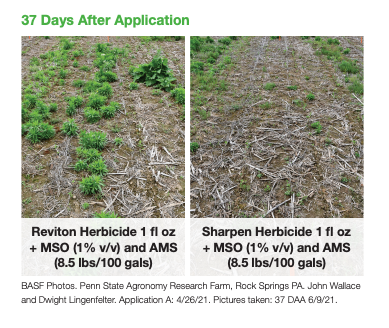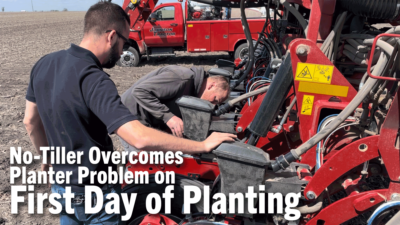There was a time when surpassing a soybean yield of over 200 bushels seemed unimaginable. That changed when Georgia farmer Alex Harrell broke the world soybean yield record, harvesting more than 206.7 bushels per acre. His achievement has not only redefined what’s possible for the industry, but it has also left many growers eager to uncover the secret to his success.
His record-breaking yield did not happen by accident — it was the result of hard work, dedication and a variety of successful management practices, one of which is earlier-planted soybeans.
Timing is Key
A study from the University of Nebraska found that a two-week delay in soybean planting can result in a yield reduction of up to 8.82 bushels per acre.1 Early planting gives soybeans a competitive edge in capturing light and moisture over problematic weeds like marestail, which thrive in no-till and reduced-tillage environments. These weeds rob the soil of essential nutrients crucial for growth, diminishing your yield potential in the process.
"Early planting not only extends the growing season but also widens the window for effective weed control,” says Gery Welker, BASF Technical Service Representative. “Getting your seed in the ground early will help give you a leg up on marestail and other winter annuals that have been lurking throughout the off-season and can often make planting more difficult, especially in a no-till system.”

While the perks to starting early are clear, there are other factors growers need to consider when preparing for planting.
“Weed control should be front and center. Establishing a plan prior to planting is critical for growers heading into this season,” Welker says. “Each year brings a slew of new challenges, but one thing we know is this: Fields that start clean and stay clean are the ones that see higher yields come harvest time.”
Start Strong and End Strong
If you deal with winter annual weeds, a preplant burndown is the best way to establish a clean field right out of the gate and keep aggressive weeds in check from planting through canopy. This is especially important in no-till fields where minimal soil disturbance can lead to increased weed challenges, as opposed to conventionally tilled fields where frequent soil turning helps control weeds mechanically. The benefits of a spring burndown program include:
- Providing a clean seedbed for earlier planting.
- Controlling emerged weeds before they become too difficult to control.
- Conserving soil moisture that can be used by the crop later.
Applying a burndown herbicide like Sharpen® Herbicide sets the stage for excellent weed control all season long. Powered by Kixor® Herbicide technology, Sharpen provides control of difficult annual weeds, allowing for easier planting and improved crop performance. Sharpen also is a highly compatible tank-mix partner that enables you to utilize your residual of choice to help keep weeds at bay throughout the season.
“Pre-emerge/burndown herbicide treatments are a first line of defense against yield-robbing weeds like glyphosate-resistant Palmer amaranth and marestail,” Welker says. “With planting time quickly approaching, starting with a burndown herbicide can help no-tillers get ahead of weed challenges and boost soybean yields this season.”
Always read and follow label directions.Kixor and Sharpen are registered trademarks of BASF.©2024 BASF. All Rights Reserved.
1 Specht, J.E., Rees, J.M., Zoubek, G.L., Glewen, K.L., VanDeWalle, B.S., Schneider, J.W., Varner, D.L., Vyhnalek, A.R. 2012. Soybean Planting Date — When and Why. University of Nebraska Extension Publication EC145. Website: https://extensionpublications.unl.edu/assets/pdf/ec145.pdf. Accessed March 15, 2024.






Post a comment
Report Abusive Comment